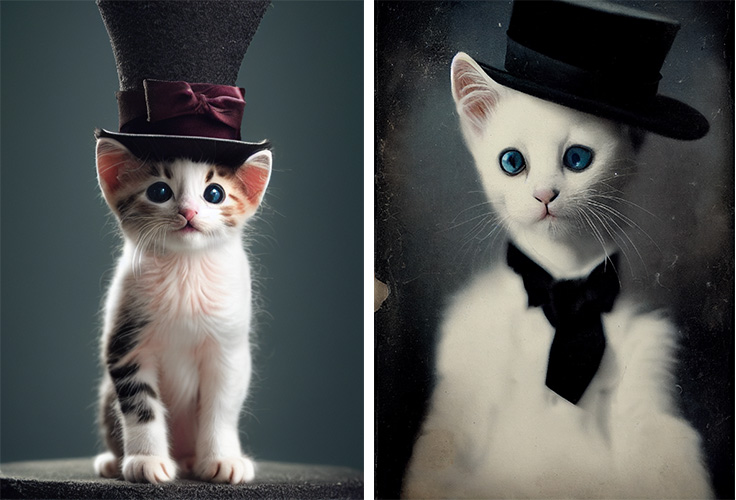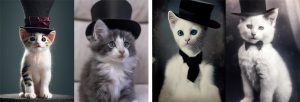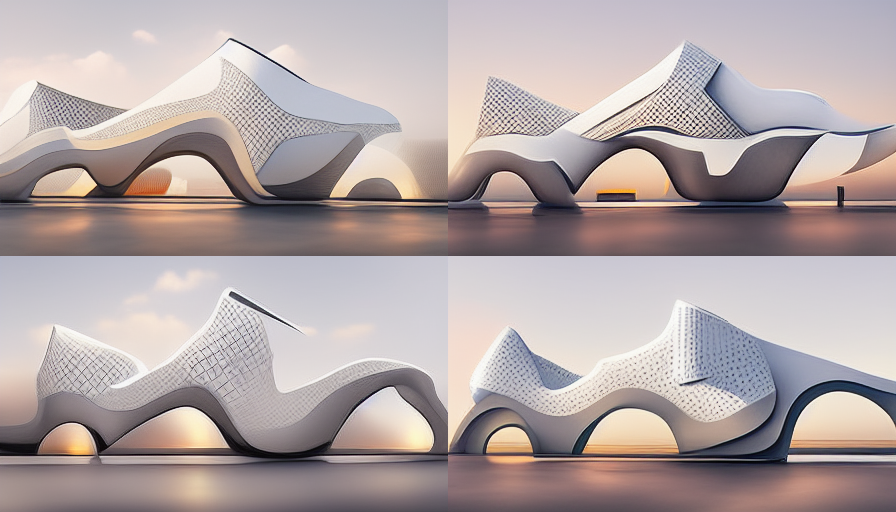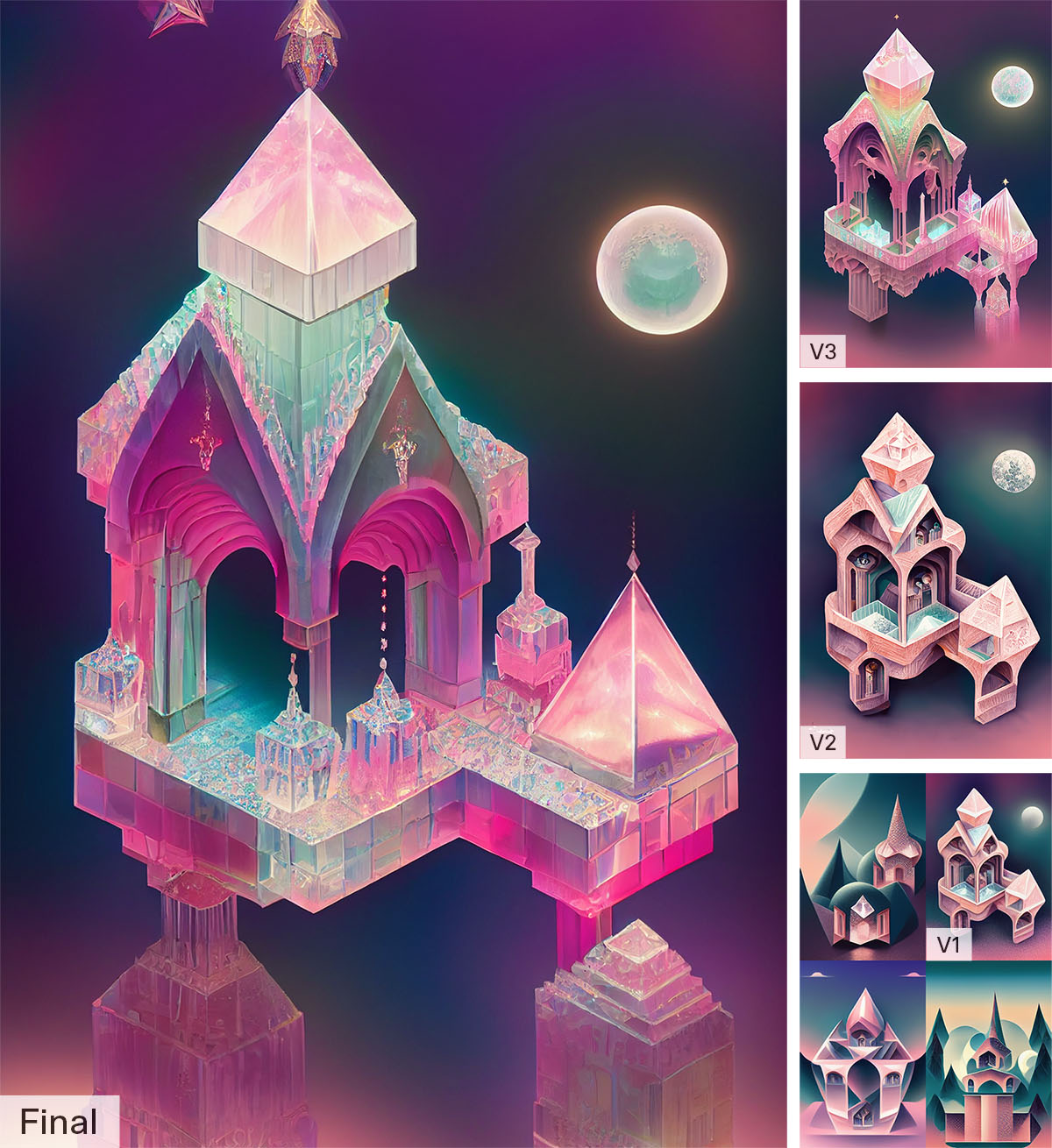For decades Artificial Intelligence (AI) has been evolving, driving the development of chatbots and speech recognition tools, driverless vehicles and robot citizens. For artists and designers, myriad new digital tools have impacted the way they create, but the algorithms and automation of AI may represent a sea change in the field.
Vivaldi Creative Director John Adie explores the opportunities, challenges, and surprises offered by AI art in this Q&A:
If you had to give a quick definition or description of AI art, how would you define/describe it?
AI art is digital imagery created with the assistance of artificial intelligence. A machine learning algorithm trained on millions of images processes natural language inputs (prompts) and generates imagery that it deems best matches the text. Technically, this is called a text-to-image model. Prompts can be very simple like: A kitten wearing a top hat. Or more complex like: a portrait of a white kitten wearing a black top hat and a suit and tie, vintage tintype photograph.

What was your entry point, or how did you first discover the AI art world?
I saw an article on one of my branding blogs where someone had used AI to generate a series of illustrated icons. The fidelity was incredible and I immediately signed up for the beta test of OpenAI’s Dall-E 2, which is what the original artist used. A few weeks later I received my welcome email and I was hooked.
What tools have you most been enjoying using, and why?
I started out with Dall-E 2, but quickly felt limited by the simplicity of the user interface. Not to mention I didn’t love the credits system. Dall-E requires you to buy credits, using one for every prompt.
Today, I almost exclusively use Midjourney, which is a Discord-based generator. Aside from generally being able to create much higher fidelity imagery, Midjourney has a variety of tools and parameters I can use to better guide the AI to my desired outcome. Things like: how hyper-realistic to make an image, the aspect ratio, or the overall “random-ness” the AI applies. Midjourney works on a monthly subscription so I can generate unlimited images –within some limitations – which works out better for my needs.
There are other tools out there such as Stable Diffusion, which is open-source. I haven’t explored that one yet.

Here’s a comparison of Midjourney and Dall-E 2. (Left two) a cat wearing a top hat (Right two) a portrait of a white kitten wearing a black top hat and a suit and tie, vintage tintype photograph
What do you find most exciting about utilizing AI tools?
I talk about this a lot but, as a creative director, using AI art generators is like having millions of accomplished artists and designers at your fingertips. Want an image to look illustrated by Haiyao Miyazaki? Done. Wonder what a Star Destroyer would look like painted by Johannes Vermeer? Got it. Want to know what kind of building Zaha Hadid would design if she were inspired by a Nike sneaker? I can show you that too. Every great creator that had or has a unique style can be tapped for their visual expertise.

Is there a difference between “image generation” and “art”?
I love this question because it’s been asked, in so many words, for millennia. What is art? Who is an artist? What tools and processes can create art? Who decides? Just as beauty is in the eye of the beholder, so is art.
Personally, I think art is anything that expresses someone’s desire to create.
Do I think a single image generated by AI is inherently art? No. But it could be. The muddy areas in this conversation are where the most compelling work is happening. You can easily generate an image that looks like it was painted by a master, but it’s the works that make you ask “could this be art?” that I find the most interesting.
For designers with more traditional skill sets, how do you think these tools will change the way that they work?
Text-to-image generators will help all types of creatives visualize their concepts faster. Creators will be able to explore combinations of styles and subjects that have never existed. And most importantly, the imagery will not be limited by their own experiences. AI can transcend human thought and take its best stab at even the wildest concepts. Think of it as a way to get out of your own head and get a more objective look at what you want to create.
There are many legal and ethical challenges surrounding AI art development — do you have any thoughts on how these challenges will have to be addressed?
The #1 concern I have seen (from the art world) is copyright and plagiarism. Since it is so easy to generate something in someone else’s style, many view this as a plagiarism grey area. While I believe it to be a valid concern, any disputes would be handled on a case by case basis anyhow, just as “regular” art conflicts are.
There are ownership questions as well. According to Midjourney’s Terms of Service, both Midjourney and the user own full rights to the images created. This means someone could take their art and sell it on a t-shirt, but so could Midjourney – and neither have any legal right to tell the other to stop. Dall-E 2, on the other hand, owns everything that users create, with no ownership given to the user.
There is someone who has acquired the first known copyright for AI generated product – a graphic novel. Still, questions remain: if the novel itself is copyrighted, is each individual piece of AI-generated illustration as well?
Ethically, the biggest concern I have seen from the world at large is deepfakes. Deepfakes are media of celebrities or public figures that look real but are generated by AI. The implications can be terrifying, especially with politicians and world leaders. People could be generated in compromising positions or, when it comes to AI video and voice generators, saying things they never said.
You can see here, in these portraits created based on a Lisa Frank style, how good Midjourney is at recreating the likeness of celebrities and public figures.

How do you think the creative world is being advanced by AI?
The more tools at an artist’s disposal, the better! As with any new tool, you have to learn how to use it — and perhaps become an expert in it. For a serious piece of work, I will spend upwards of two hours just refining the prompt and trying a bunch of different word combinations, styles, and technical parameters. The learning curve isn’t all that steep, but it’s still a satisfying new way to put my creativity to work.
People are using the AI in their everyday creative workstreams, too. Some artists generate a bunch of imagery and then photoshop the best parts together. Others use a technique called overpainting, which is when they take an AI generated composition and then apply their style over top. They save time by making the AI take a first stab at lighting, scale, and proportions so they can focus on style, color, and refining the subject matter.
Another great benefit is more and more people are learning about artists and art history through these tools. People who may have never considered who Johannes Vermeer or Albrecht Dürer were, are now looking for artists who can match the style they see in their head. I often discover new artists by just googling “famous [blank] artists” where blank is a particular media or style, i.e. engraving or impressionism. Plus, I learn about new artists from reading other people’s prompts.
I’m certain that as these tools get democratized and easier to use, we’ll see a shift in the way everyone will be approaching image creation — similar to how high definition photography and video were democratized by smartphones. Perhaps those who have always had vision, but have lacked the artistic skill to realize it will be empowered to finally bring their idea to life with AI.
Can you share a few of the different things you’ve created and maybe a sentence or two about what tool you used to create it, and what your thoughts/ideas were going into the creation?
The official Midjourney Facebook page recently held their first community contest with the theme “Fantasy Buildings.” There were over 500 submissions, and I ended up taking first place with this isometric crystal building. For whatever reason, I am often attracted to crystals and colorful light refractions. Cross that with my love of MC Escher and the Monument Valley video game and we ended up here. It’s against the rule to photoshop images for Midjourney contests, so these are completely unedited.

From left to right: original generations to iterations to final artwork.
Prompt: crystal castle made of luxury crystals, baccarat swarovski, windows, doors, lights, in a mystical forest, sailor moon crescent, pink soft glow, ::MC Escher::2, isometric, mystical glistening –ar 2:3
Anything else to add/mention?
Go sign up for Dall-E 2 now! They just removed the waitlist. Your first 15 credits every month are free. Also check out the public Midjourney feed to get an idea of just how varied the generations can be.
Where can people find some of your AI art work?
You can follow me on Instagram at crystal_aesthetic.ai and on LinkedIn. Please reach out if you have questions or want to chat!
